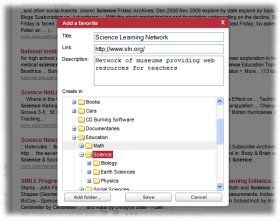|
Education
Web
Viewing 1-2 of 2 total results
molecules (firework explo- sions). b. The total energy in an isolated system remains constant regardless of transformation. (Whenever the amount of en- ergy in one place or form diminishes, the amount in other places or forms increases by an equivalent amount.). c. Whenever energy is transformed fro...
1
0
molecules (firework explo- sions). b. The total energy in an isolated system remains constant regardless of transformation. (Whenever the amount of en- ergy in one place or form diminishes, the amount in other places or forms increases by an equivalent amount.). c. Whenever energy is transformed from one form to another, some energy becomes less available (heat) energy (ENTROPY = heat/temperature e.g., such as from engines, electrical wires, how-water tanks, our bodies, stereo systems). S9-12:24 Students
50
0
http://education.vermont.gov/new/pdfdoc/pubs/grade_expectations/science.pdf#page=50
education.vermont.gov/new/pdfdoc/pubs/grade_expectations/science.pdf#page...
molecules (firework explo- sions). b. The total energy in an isolated system remains constant regardless of transformation. (Whenever the amount of en- ergy in one place or form diminishes, the amount in other places or forms increases by an equivalent amount.). c. Whenever energy is transformed from one form to another, some energy becomes less available (heat) energy (ENTROPY = heat/temperature e.g., such as from <span class="highlight">engines</span>, electrical wires, how-water tanks, our bodies, stereo systems). S9-12:24 Students
was easy or difficult about following the research plan. H&SS3-4:7 Students communicate their findings by… • Giving an oral, written, or visual presentation that summarizes their findings. H&SS5-6:6 Students make connections to research by… • Explaining the relevan...
1
0
was easy or difficult about following the research plan. H&SS3-4:7 Students communicate their findings by… • Giving an oral, written, or visual presentation that summarizes their findings. H&SS5-6:6 Students make connections to research by… • Explaining the relevance of their findings (So what?) to themselves, their community, and/or history (e.g., by ask- ing follow-up questions, by proposing additional re- search). • Explaining how their research has led to a clearer under- standing of
17
0
http://education.vermont.gov/new/pdfdoc/pubs/grade_expectations/history_social_sciences.pdf#page=17
education.vermont.gov/new/pdfdoc/pubs/grade_expectations/history_social_s...
was easy or difficult about following the research plan. H&SS3-4:7 Students communicate their findings by… • Giving an oral, written, or visual presentation that summarizes their findings. H&SS5-6:6 Students make connections to research by… • Explaining the relevance of their findings (So what?) to themselves, their community, and/or history (e.g., by ask- ing follow-up questions, by proposing additional re- <span class="highlight">search</span>). • Explaining how their research has led to a clearer under- standing of
18
0
http://education.vermont.gov/new/pdfdoc/pubs/grade_expectations/history_social_sciences.pdf#page=18
education.vermont.gov/new/pdfdoc/pubs/grade_expectations/history_social_s...
research. H&SS5-6:6 Students make connections to research by… • Explaining the relevance of their findings (So what?) to themselves, their community, and/or history (e.g., by ask- ing follow-up questions, by proposing additional re- <span class="highlight">search</span>). • Explaining how their research has led to a clearer under- standing of an issue or idea. • Proposing solutions to problems based on their findings, and asking additional questions. • Identifying what was easy or difficult about following the research plan
19
0
http://education.vermont.gov/new/pdfdoc/pubs/grade_expectations/history_social_sciences.pdf#page=19
education.vermont.gov/new/pdfdoc/pubs/grade_expectations/history_social_s...
refute the original re- <span class="highlight">search</span> statement. • Proposing solutions to problems based on findings, and asking additional questions. • Identifying problems or flaws with the research process and suggesting improvements (e.g., evaluating the limitations of some sources). • Proposing further investigations. H&SS9-10:7 Students communicate their findings by… • Developing and giving oral, written, or visual presentations for various audiences. • Soliciting and responding to feedback. • Pointing out
|
